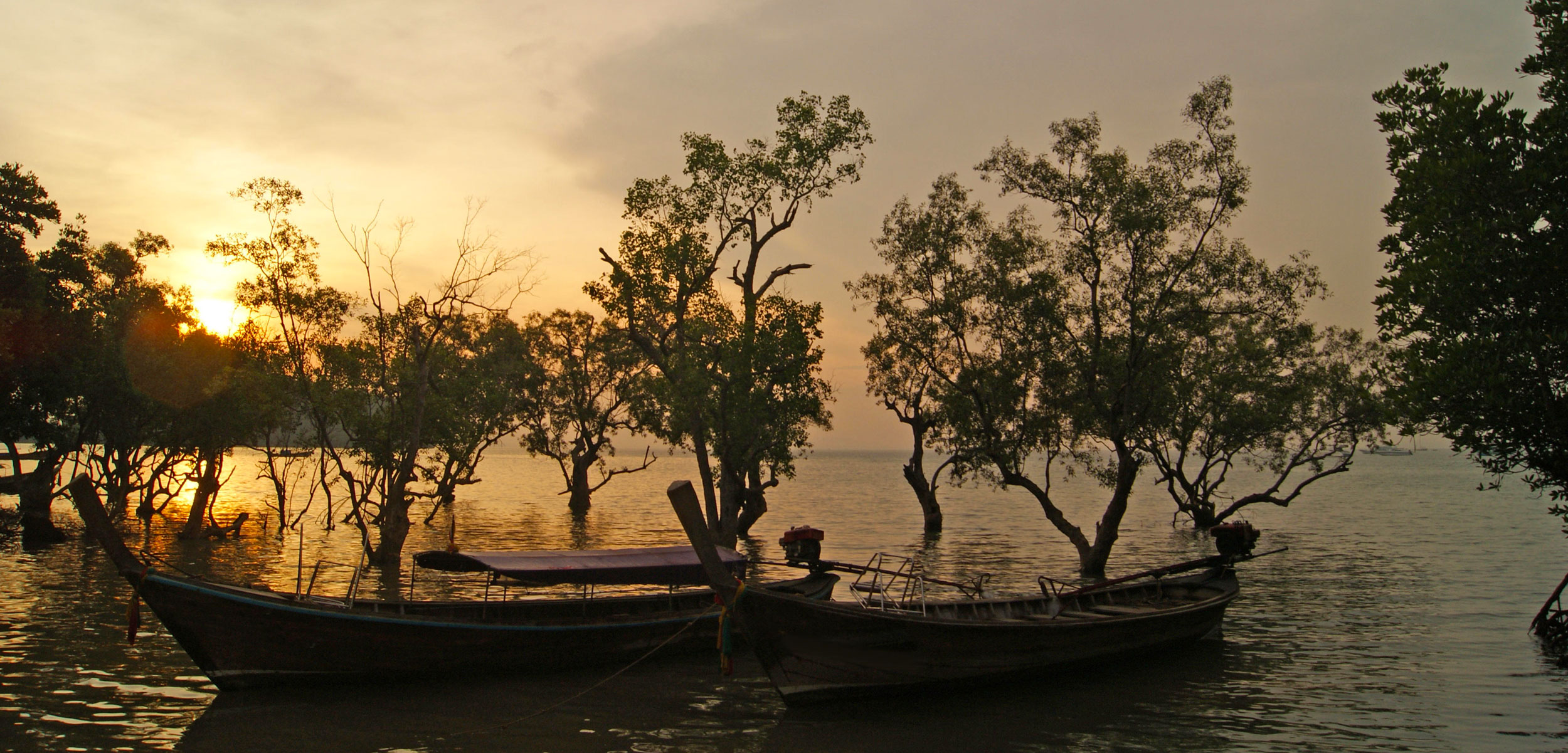Mangroves Lack the Genetic Diversity to Adapt to Climate Change
New research shows that these salt-water-loving plants are likely ill-equipped to cope with the sea level rise.
Article body copy
Mangroves support coastal ecosystems around the world. In the tropics and subtropics, they rim coastlines and estuaries in thick green bands, providing shelter for everything from monkeys to Bengal tigers to critically endangered sloths. Considering their wide range and unique adaptations to saltwater environments, mangroves seem like an evolutionary success story. But the reality is that mangroves have surprisingly low genetic diversity, which will be a big problem as they attempt to adapt to changing conditions. New research suggests that mangroves may break rather than bend under the stress of the climatic changes to come.
Suhua Shi, an evolutionary biologist at Sun Yat-sen University in Guangzhou, China, and her colleagues surveyed the genetic material of six of the world’s roughly 100 mangrove species, examining 26 populations around the Gulf of Thailand and China’s Hainan Island. The team found that within each species, mangroves are so low in genetic diversity that individual trees are essentially indistinguishable from one another. This means they will have less chance of adapting to a changing world than more diverse species.
The finding is surprising, as mangroves seem like paragons of survival. Mangroves are adapted to living in salt water that is often too harsh for other trees and shrubs. And, over the past several hundred thousand years, mangroves have survived changes in sea levels as the oceans have risen and fallen with the ice ages. They can withstand regular swings in salinity and temperature. But at the end of the Last Glacial Maximum 20,000 years ago, when sea level rose particularly quickly, most mangroves died. Those that survived represented only a sliver of the original genetic diversity. Biologists refer to events like this as a genetic bottleneck.
Mangroves have yet to recover from this bottleneck. “They sort of barely eke out a living,” says Chung-I Wu, a University of Chicago evolutionary biologist and coauthor of the paper. Several years ago, the researchers glimpsed how the lack of diversity affects mangrove resilience when a series of major floods hit Yalong Bay on Hainan Island. The seawater rose by a meter, killing up to 95 percent of some of the island’s mangrove species.
When the team looked at the relationship between the rate of mortality and the genetic diversity of the local mangrove species, they found that species with the lowest diversity fared the worst.
Yet the trees aren’t the only species at risk. “If the mangroves are gone—because they anchor the entire tropical coast—all the crustaceans, all the seagrasses, the whole coastal flora and fauna would change completely,” Wu says.
Future sea level rise brought on by anthropogenic warming will be even more threatening to mangroves than past changes in sea level, Wu says, because humans have modified areas surrounding many mangroves, making an inland retreat more difficult. A meter rise now would be worse for the plants than in the past, he says, potentially threatening their very survival.
Catherine Lovelock, an ecologist at the University of Queensland in Australia, says the discovery that mangroves are so low in genetic diversity is “very interesting,” but she thinks comparing the genetic diversity of mangroves with other marine plants, such as seagrasses, would put the findings in context. Perhaps mangroves aren’t the only species to have been weakened by past bottlenecks.
Lovelock isn’t worried that mangroves will go extinct, but says losses could be permanent in remote areas. Mangroves only rarely disperse long distances. If the mangroves in some areas are wiped out, it’s unlikely they’ll return, even if the environmental conditions reverse.
Wu sees the problem in much starker terms. “If the sea level continues to rise, the first group [of species] to die will be the mangroves.”

